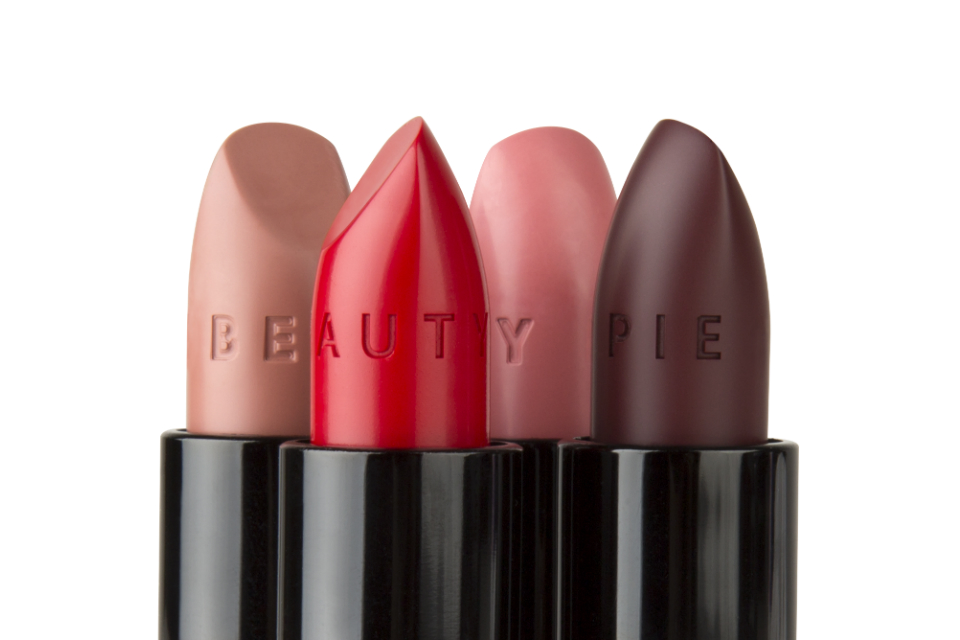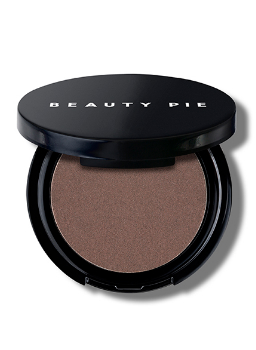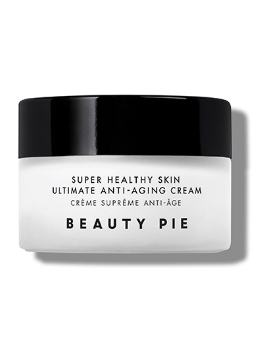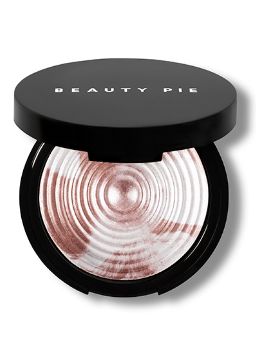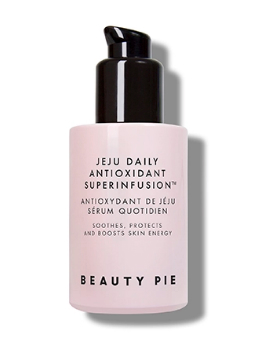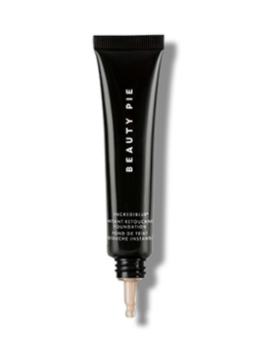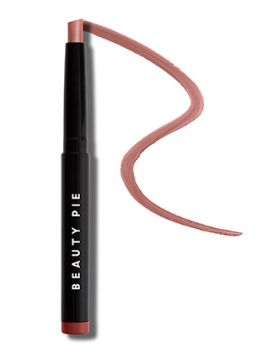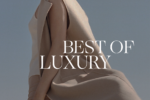Marcia Kilgore
The influential founder of Bliss Skincare gives us to the scoop on her latest startup.
The influential founder of Bliss Skincare gives us to the scoop on her latest startup, Beauty Pie, that’s poised to change the way you shop for makeup, skincare and more.
In 1993, 25-year-old Marcia Kilgore launched Bliss Spa, a startup that disrupted the market and was almost immediately scooped up by a major French luxury conglomerate for a lot of money (more than Kilgore ever thought she would earn “in a lifetime”). Kilgore grew her company out of a tiny studio in New York City, which blossomed into a mini empire frequented by supermodels and movie stars of the era. They all left with pore-perfecting results and dewy, plump skin from Kilgore’s expert hands.

In 1999, LVMH acquired the brand, and Kilgore could have easily put her feet up and dined on caviar for a bit. Instead, the exuberant, Canadian-born entrepreneur went on to create a handful of other freshly imagined brands, from retro-skincare line Soap and Glory to the biomechanically-engineered FitFlop (Uma Thurman is a fan, and designed a capsule collection).
Kilgore’s latest venture is Beauty Pie, an online beauty membership service like no other.
As a serial entrepreneur, Kilgore’s mind is rarely, if ever, in the off-position.
By partnering with top laboratories around the world, Beauty Pie delivers makeup and skincare at factory-direct prices—ten times lower than what you’d normally pay—with formulas that are almost identical (if not slightly better) than those found in luxury aisles. Think high-impact lipsticks for $2.39 and potent, anti-aging serums for $7.00.

As a serial entrepreneur, Kilgore’s mind is rarely, if ever, in the off-position. A mother to two school-age boys, she lives in Founex, Switzerland, where she hikes, runs and still channels the unstoppable energy and optimism of her 20s. Here, Kilgore talks about her early days in New York City, her rise to skincare fame, and why she will never, ever “tsk, tsk” your beauty routine.
Growing up, did you have an interest in beauty?
I grew up between Calgary, Alberta and Outlook, Saskatchewan in Canada, but I moved to New York when I was 18 to find some inspiration, some challenge, and to be part of a bigger melting pot. While I was by no means a ‘beauty junkie’ in my younger years, I always did appreciate the power of a great haircut.
What inspired you to start your own spa?
Seriously long story. When I got to New York in the late ‘80s, I was supposed to attend Columbia University, but my tuition payment plan fell through. In order to pay my rent, and hopefully (eventually) wrangle some scholarship dollars, I worked as a personal trainer for clients that I had met at the local gym and through my sister, who was working as a model in New York at the time.
I spent 14 hours a day sweating in the NYC pollution and my skin, which had always been a little bit uncontrollable, became a mess. One summer a few years later, when my clients decamped for the Hamptons, I took a two-month crash course in skincare and, after about a year of practice, I opened up a one-room studio in 1993 where I gave facials.
Did you have an “aha” moment when the idea for Bliss came to you?
Absolutely. I eventually saved enough to take part-time university classes at New York University, and had put away $50 to treat myself to a facial after my economics finals. A Romanian facialist peered down at my skin and made ‘tsk’ noises, before she proceeded to bring her boss into the room, where they both looked at the state of my face and said “what a pity.” I vowed, at that moment, to make sure that when people came into my spa, I would never make them feel anything but happiness.
What was the beauty scene like in the early ‘90s?
It was absolutely old school. All of the spas were opened and run by Eastern Europeans. Everybody still used steam! The big French brands dominated skincare and makeup. Bobbi Brown was just getting started with her 12 lipsticks. Nobody had even heard of Crème de La Mer (we launched it at Bliss!). It was a time when the industry was starting to revolutionize, and new indie brands were starting to catch on. Before that, it was either class (Dior, Chanel, Guerlain) or mass (H20+, Revlon, etc). There was nothing in the middle. I saved every dime I had, worked every day of the week for 12-15 hours a day, and did what I had to do to pay the bills. At the time, though, our rent was probably only about $7,000 a month, so it was still possible to be independent, to be ‘local’, and to be inclusive.
What was the biggest challenge you faced in the early days of Bliss and how did you overcome it?
Making people—especially women—feel good and feel empowered just totally energizes me.
Exhaustion. Enthusiasm. I’ve always really loved my job. Making people—especially women—feel good and feel empowered just totally energizes me. So if I’m working a diabolically hard schedule, as long as I’m getting good feedback from my customers, it keeps me going!
Bliss became known for its very tongue-in-cheek named products. How did you develop these?
We did 73 submissions of a hand cream once, to get it “just right.”
Another long story. In 1996, Vogue (thank you Vogue!) ran a piece – with an Irving Penn photo – about three creams that a girl “shouldn’t” live without. One of them was a cream we exclusively sold. After that, our phone rang so hard for so long that we had to open the equivalent of a mail-order business. Thousands of people were calling every month, wanting to order pretty much anything we recommended, and asking for a catalogue. As I had a friend who was an art director, a client who was a photographer, and sister who was an illustrator, I decided that we could create a catalogue. Being budget shy (I’d just built a 10-room spa and still owed our contractor pretty heavily) I wrote the copy. And that was the beginning of my second career as a copywriter. So I worked with a lab in Long Island to create the products and named most of them myself. I still remember the name of my favorite chemist, Bill Bennington. We did 73 submissions of a hand cream once, to get it “just right.” There are so many funny anecdotes from those days.
What was your Bliss clientele like at the beginning? Did you have any client that really helped spread the word about you?
I have great stories about Calvin Klein, Courtney Love, Oprah…you name it. Bliss was like a social club where you went to get seriously effective skincare treatments.
We treated everyone from secretaries to movie stars, and every happy client seemed to send others, which was a problem, because we were often booked for months in advance. I remember one particular early morning a teenage girl from Boston with really problematic skin (who had read, most likely in Vogue, about our facials) made the trip down. She had arrived in the locker room and Uma Thurman, who was my first client that morning, helped her with her locker key. She laid down on my table for her 90-minute horizontal just reeling and star-struck. I have great stories about Calvin Klein, Courtney Love, Oprah…you name it. Bliss was like a social club where you went to get seriously effective skincare treatments.
What was the biggest risk you took with Bliss?
Probably just opening a 10-room spa in New York City at the age of 26 without any outside investment, and hoping I’d be able to pay for the construction tab when it was due.
Did you ever imagine you’d sell the brand?
Bliss was absolutely for love. FitFlop was for curiosity. Beauty Pie is for companionship!
I certainly never set out to sell Bliss. (There’s an old saying that your first marriage is for love, your second is for money and your third is for companionship). I’d say that goes for businesses, too, if you have more than one. Bliss was absolutely for love. FitFlop was for curiosity. Beauty Pie is for companionship!
When you knew that selling Bliss was the right move?
I don’t think there are right or wrong moves, but rather choices that you make. At the time, when LVMH came to me to buy Bliss, they were offering me more money than I ever thought I would make in my lifetime. Being from a relatively un-wealthy background, it was pretty difficult to say no to that, because I had really never had any money in the bank, having always reinvested it in my ever-growing business.
How long after Bliss did you wait to launch your next brand?
I sold Bliss in 1999, stayed with it until 2005, started Soap and Glory in 2006, and launched Soaper Duper in 2016. FitFlop came about in between them in 2007, and Beauty Pie arrived in 2016 as well. They say that real entrepreneurs are always hedging their bets, and I think there’s a lot of truth to that. You never quite know if things are going to work for you, so you hedge. It’s exhausting, but it makes you feel a little bit better.
As a mother of two children, how did you balance work and family while building such successful, profitable brands from scratch?
I lived by the deathbed rule. On my deathbed, which would I regret more, missing one of my son’s school plays, or missing a finance meeting? Family always comes first.
Tell us how the idea for Beauty Pie came to you.
In a nutshell, I was at a beauty event of one of the world’s leading cosmetic suppliers, someone who supplies product for everyone from YSL to D&G to Tom Ford to Charlotte Tilbury to Bobbi Brown. I left the presentation feeling delighted with my free bag full of samples that I probably would have paid $2000 for at retail.
To democratize the deluxe. It was a way for every woman to get a bigger piece of the Beauty Pie.
On my way home, I went through a train station in Milan and into the Sephora and saw a lot of the exact same products, but all packaged and branded. And knowing that luxury cosmetics and skincare generally retail at 10 times what they actually cost to produce (at the factory), I thought: Wouldn’t it be great if every woman could have this experience, where she can get luxury beauty out of the doors of the factory? Makeup without all that markup? High performance skincare at low-maintenance prices? And that’s how the idea of Beauty Pie came about. I wanted to create a kind of Netflix for cosmetics. To democratize the deluxe. It was a way for every woman to get a bigger piece of the Beauty Pie.
What’s been your most popular makeup and skincare item to date?
Our lipstick flies off our e-shelves every week, as does our Triple Beauty Luminizer, Pro-Glow Highlighter, Great Skin Foundation, Superbrow Mousse (who knew?), and mascara. Skincare has been ridiculously popular. The most-wanted list is lead by our Jeju Antioxidant Overnight Moisture Infusion, and Super Healthy Skin Ultimate Anti-Aging Cream (which would probably retail for about $300, but comes out of the factory for about $10). Our members really see the value when they can buy a full setup of Swiss skincare (moisturizer, eye cream, cleanser, exfoliator and serum) for $30-40.
What type of product or formula are you still searching for?
A world-class globally compliant SPF 50. All the really good stuff, it seems, doesn’t match the rather archaic US sunscreen rules. Also anything that would make hair thicker, and the perfect cool-toned self-tanner that doesn’t make you smell horrible.
Which Beauty Pie products do you personally use every day or keep in your bag?

I instagrammed a shot of my makeup bag the other day, because it was so hilariously full of Beauty Pie (and lab samples), it was too hard not too. For skincare, when I’m not testing new formulations and lab submissions, I go back to my staples, which are the Energizing Super Stem Cell Moisture-Shot Serum, the Super Healthy Skin Ultimate Anti-Aging Cream, the Five Minute Facial (once or twice a week), the Double Phase Daily Detox Cleanser.
Then for makeup, I’m obsessed with our Incrediblur Foundation, Uber Curl Drama Mascara, One-Powder Wonder, Fantasticolour Lipsticks (I love Vegas Nude), the SuperBrow Colour Mousse, and our Neutrals Eyeshadow Palette.
What is the beauty scene like where you live in Switzerland? Any amazing spas you’ve found there?
Switzerland is known for its skincare because of the Alpine waters, fresh air, and mountain flowers. But I have to admit to not having been to a spa in years! (When have kids, you don’t really go to spas anymore, even though you probably should). There are several labs here – some of my favorites for years – that make Beauty Pie skincare, so I pile those products on in strategic order once a week in place of a professional facial.
Do you still work out? How much into wellness are you, and what do you think of its influence on beauty at the moment?
I’m a moderation girl. I’m juggling so much at any given time that it’s really impossible to be committed to any kind of fad dieting or fasting, or follow a guru, or get into the newest form of Pilates Fusion. My exercise has to be something I can do anywhere. And with the inevitable jet lag that comes with my life (I might be in China in a shoe factory one day, in NY doing meetings the next), I’ve sometimes just got to eat whatever I can to get myself adjusted to the time zone I’m operating in.
I think “aspiring” to be better at your own wellness is a very positive habit.
I do a decent amount of yoga, run three times a week, and have recently gotten back into wearing a weighted jacket for a five-mile hike once on the weekend and at least once during the week for sheer calorie-burning and bone density purposes. I drink a lot of water, don’t drink much alcohol, avoid processed food and sugar, and am hoping, one of these days, to get enough sleep.
I think “aspiring” to be better at your own wellness is a very positive habit, even if you don’t always get there!
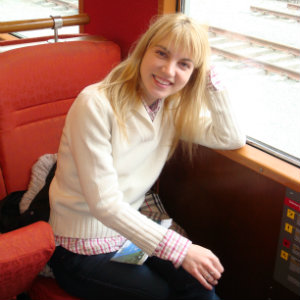
Kari Molvar is a beauty writer and backstage reporter who has covered everything from high-performance skincare to hands-on makeup applications. She started her career in beauty as a senior editor at Allure and has since written for Vogue, T: The New York Times Style Magazine, Harper’s Bazaar, Town & Country and the Wall Street Journal among other print and digital publications. She lives in Connecticut with her husband and two (DIY-obsessed) young daughters. Follow her @Kari_Molvar


